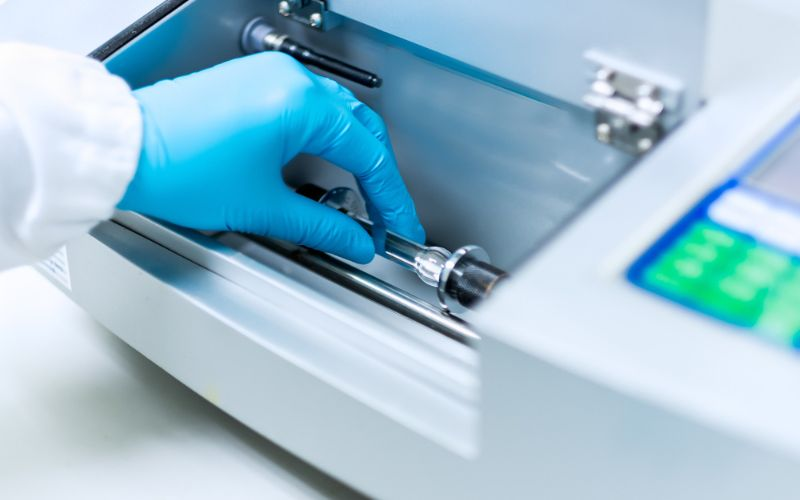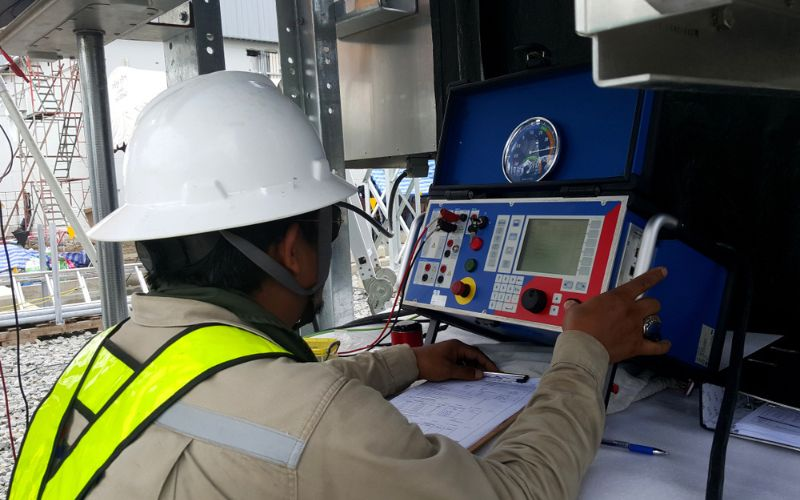
Transformers are a crucial component in the power distribution system. They play a central role in transferring electrical energy from one circuit to another, usually at different voltage levels. Ensuring the proper functioning of transformers is essential to maintain the integrity of the electrical network. One of the critical tests performed on transformers is the polarity test. In this article we will look at transformer polarity testing, its importance and how to do it.
Polarity Test: Deciphering the Basics

Polarity testing is a fundamental procedure in the transformer sector. This determines the relationship between the winding turns and the direction of the induced voltage to ensure that the transformers operate correctly and efficiently. This article explains the basics of polarity testing, its importance, and the exact steps to perform this important test.
What is polarity in transformers?
Polarity in transformers refers to the relationship between the direction of the windings and the movement of the induced voltage. Simply put, it determines whether the primary and secondary windings are wound in the same direction or in opposite directions. Understanding polarity is important because it ensures that the transformer will function correctly when connected to the electrical system.
Why is polarity important?
Correct polarity of a transformer is crucial for several reasons:
- Phase Angle Consistency: Polarity ensures that the phase angle between the primary and secondary voltage remains constant. Inconsistent polarity can cause phase shifts that affect the operation of connected devices.
- Avoid errors: Correct polarity prevents short circuits and transformer disturbances. If the polarity is incorrect, very high currents can flow, causing overheating and possibly damage to the transformer.
- Compatibility: Polarity is critical for transformers that are part of a larger electrical network. For smooth integration and operation, it is important that all transformers have the same polarity.
Performing the polarity test

Polarity testing is relatively simple but requires precision. Here are the steps to perform a polarity test on a transformer:
Step 1: Preparation
Before starting the test, make sure the transformer is de-energized and isolated from the electrical system. When working with transformers or electrical equipment, safety should always be your first priority.
Step 2: Identify windings
Determine which winding is the primary winding and which is the secondary winding. The primary winding is generally connected to the higher voltage source while the secondary winding is connected to the lower voltage load.
Step 3: Mark the Windings
Mark the winding connections to avoid confusion. This step is particularly important in situations where multiple transformers are involved. Properly labeled connections help you connect the transformer correctly after testing.
Step 4: Connect a low voltage AC power source
Connect a low voltage AC power supply (typically 10-30 volts) to the primary winding terminals. Make sure the voltage source is set to its rated frequency, usually 50 or 60 Hz.
Step 5: Look at the Secondary Winding
When applying voltage to the primary winding, carefully observe the voltage induced in the secondary winding. Note the direction of the induced voltage.
Step 6: Analyze the results
Compare the observed direction of induced voltage in the secondary winding with the expected demand based on the winding turns. If the observed direction matches the predicted order, the polarity is correct. If they are opposite, the polarity is reversed.
Step 7: Correct Reverse Polarity
If the polarity is reversed, it must be corrected before connecting the transformer to the electrical system. To do this, change the primary winding connections or swap secondary winding leads as necessary to ensure correct polarity.
Step 8: Final Check
After correcting the polarity, reapply the low voltage AC source and verify that the voltage induced in the secondary winding is now in the expected direction.
Advanced Polarity Testing Techniques

While the basic polarity testing method described above is widely used and sufficient for most applications, more advanced techniques are available for accurate polarity testing in specific scenarios. Here we look at two of these advanced methods:
Vector Group Polarity Test
The vector group polarity test is used on transformers that have complex windings or are part of a more complex electrical system. These transformers usually have multiple primary and secondary windings with different connections. The vector group polarity test helps identify the polarity relationship between each winding group.
How it works
- Identification of winding groups : The first step is to identify the different winding groups of the transformer. Each coil group consists of one or more windings connected together.
- Application of low voltage alternating current : A low voltage AC source is applied to one of the winding groups while the voltage induced in all other coil groups is monitored.
- Measurement of phase angles : The phase angles between the voltages induced in different groups of windings are measured. By comparing these phase angles, the polarity relationships between groups of windings can be determined.
- Polarity check : The results obtained are compared with the transformer specifications to ensure that the polarity of the vector group is correct.
Polarity by current reversal method
This method is particularly useful when there are transformers with a high voltage ratio and may not be suitable for traditional polarity testing with a low voltage AC source.
How it works
- Current reversal : In this method, instead of using a low voltage AC source, a high current (usually equal to the rated current of the transformer) is injected into one of the groups of windings.
- Measurement of induced voltage : The voltage induced in the secondary winding is measured while high current flows through the primary winding.
- Direction of induced voltage : The center of gravity of the induced voltage in the secondary winding is noted. This is compared to the expected demand based on the number of windings to determine polarity.
- Adjust if necessary : If the polarity is reversed, adjustments can be made to correct this if necessary.
These advanced methods offer greater accuracy and are particularly useful when dealing with transformers with complex configurations or when testing large power transformers. However, special equipment and knowledge are required to carry it out effectively.
Conclusion
In summary, transformer polarity testing is a fundamental procedure to ensure their proper functioning and integration into the electrical system. Correct polarity is important to avoid phase shifts, errors and device damage. Careful performance of this test and adherence to safety protocols are essential to maintaining the reliability and efficiency of transformers in power distribution systems.
Common questions
1. Can a transformer work with reverse polarity?
No, transformers cannot function properly if the polarity is reversed. Reversed polarity can cause phase shifts and excessive currents, damaging the transformer and connected devices. Before connecting a transformer to the electrical system, it is important to ensure correct polarity.
2. Are polarity tests performed on all transformers?
Yes, polarity tests are normally performed on all transformers before they are installed in the electrical system. This ensures that the transformers are connected correctly and functioning as expected. Regular maintenance and testing may also include polarity checks to detect any changes or errors over time.
3. What are the common polarity testing methods?
The most common transformer polarity testing methods include the voltage testing method described in this article and the phase relationship testing method, which measures the phase angle between the primary and secondary voltage. Both methods are effective in determining the polarity of a transformer.

